-
 Bitcoin
Bitcoin $108,165.4587
0.78% -
 Ethereum
Ethereum $2,456.3517
1.15% -
 Tether USDt
Tether USDt $1.0003
0.00% -
 XRP
XRP $2.1934
0.05% -
 BNB
BNB $650.0935
0.52% -
 Solana
Solana $151.3905
2.69% -
 USDC
USDC $0.9998
0.00% -
 TRON
TRON $0.2751
-0.32% -
 Dogecoin
Dogecoin $0.1640
0.87% -
 Cardano
Cardano $0.5631
0.57% -
 Hyperliquid
Hyperliquid $38.7115
4.69% -
 Bitcoin Cash
Bitcoin Cash $493.1868
-0.39% -
 Sui
Sui $2.8217
3.61% -
 Chainlink
Chainlink $13.3994
2.08% -
 UNUS SED LEO
UNUS SED LEO $9.1632
0.94% -
 Avalanche
Avalanche $18.0318
1.97% -
 Stellar
Stellar $0.2388
0.35% -
 Toncoin
Toncoin $2.8763
1.41% -
 Shiba Inu
Shiba Inu $0.0...01160
1.59% -
 Litecoin
Litecoin $86.6393
1.29% -
 Hedera
Hedera $0.1485
0.16% -
 Monero
Monero $315.7948
1.56% -
 Polkadot
Polkadot $3.4240
1.88% -
 Bitget Token
Bitget Token $4.6314
-0.44% -
 Dai
Dai $0.9998
-0.01% -
 Ethena USDe
Ethena USDe $1.0002
-0.01% -
 Uniswap
Uniswap $7.2110
2.59% -
 Aave
Aave $270.6087
6.07% -
 Pi
Pi $0.5350
0.52% -
 Pepe
Pepe $0.0...09545
1.26%
How to design a hit NFT? The secret of visual narrative and community operation
Designing a hit NFT requires a compelling visual narrative, robust community engagement, and a unique selling proposition to stand out in the competitive market.
May 08, 2025 at 06:56 am
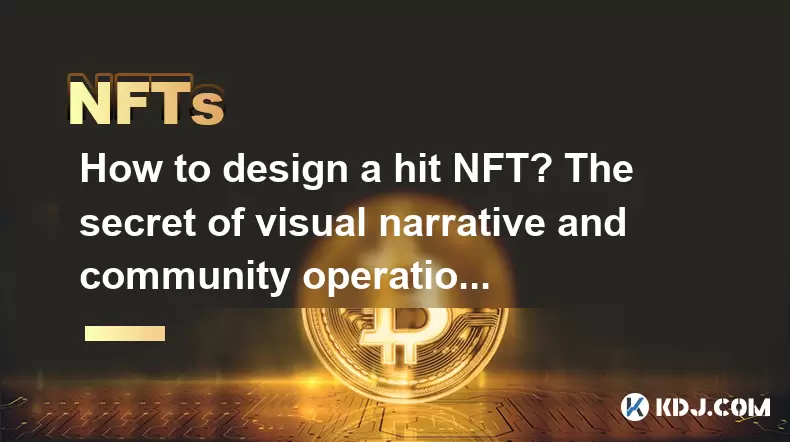
In the vibrant world of cryptocurrencies and digital assets, Non-Fungible Tokens (NFTs) have carved out a significant niche. Designing a hit NFT involves more than just creating an appealing digital artwork; it requires a deep understanding of visual narrative and robust community operation. This article delves into the intricate process of crafting an NFT that captures attention and sustains interest.
Understanding the Importance of Visual Narrative
The visual narrative of an NFT is crucial in distinguishing it from the myriad of digital assets flooding the market. A compelling visual story can evoke emotions, convey messages, and create a memorable experience for the viewer. To design an NFT with a strong visual narrative, consider the following elements:
Theme and Concept: Begin by defining the theme or concept of your NFT. This could be anything from futuristic landscapes to abstract art or even representations of cultural icons. The theme should resonate with your target audience and reflect the message you want to convey.
Artistic Style: Choose an artistic style that complements your theme. Whether it's photorealistic, minimalist, or a unique blend of styles, the artistic approach should enhance the narrative and make the NFT visually striking.
Storytelling Elements: Integrate storytelling elements such as characters, plots, and settings into your NFT. These elements can be subtle or overt, but they should contribute to a cohesive narrative that viewers can appreciate and interpret.
Symbolism and Metaphor: Use symbolism and metaphor to add depth to your NFT. Symbols can convey complex ideas and emotions, making the artwork more engaging and thought-provoking.
Leveraging Community Operation for NFT Success
While a captivating visual narrative is essential, the success of an NFT also hinges on community operation. Building and maintaining an engaged community can propel an NFT to new heights. Here are key strategies to consider:
Community Engagement: Foster a sense of belonging and participation among your NFT's community. This can be achieved through regular updates, interactive events, and platforms for community members to share their thoughts and feedback.
Social Media Presence: Utilize social media platforms to showcase your NFT and engage with potential buyers and enthusiasts. Create visually appealing content that highlights the uniqueness of your NFT and encourages sharing and discussion.
Collaborations and Partnerships: Collaborate with other artists, influencers, and brands to expand your reach and credibility. Partnerships can introduce your NFT to new audiences and enhance its perceived value.
Transparency and Communication: Maintain transparency with your community by providing clear information about the NFT's creation process, roadmap, and any updates or changes. Effective communication builds trust and loyalty among community members.
Crafting a Unique Selling Proposition
To stand out in the competitive NFT market, it's essential to craft a unique selling proposition (USP) for your NFT. Your USP should highlight what makes your NFT different and why it deserves attention. Consider the following aspects when defining your USP:
Rarity and Exclusivity: Emphasize the rarity and exclusivity of your NFT. Limited editions or unique features can increase the perceived value and desirability of your NFT.
Utility and Functionality: If applicable, showcase any utility or functionality associated with your NFT. This could include access to exclusive content, events, or even tangible benefits in the physical world.
Cultural and Emotional Connection: Tap into cultural trends and emotional triggers to create a connection with your audience. An NFT that resonates culturally or emotionally is more likely to capture attention and sustain interest.
Implementing Effective Marketing Strategies
Marketing plays a pivotal role in the success of an NFT. Effective marketing strategies can help you reach your target audience and generate buzz around your NFT. Here are some approaches to consider:
Teasers and Previews: Release teasers and previews of your NFT to build anticipation and excitement. These can be shared on social media, NFT marketplaces, and other relevant platforms.
Influencer Marketing: Partner with influencers who align with your NFT's theme and target audience. Influencers can help amplify your message and reach a broader audience.
Content Marketing: Create valuable content that educates and informs your audience about your NFT. This could include blog posts, videos, and infographics that highlight the unique aspects of your NFT.
Paid Advertising: Consider using paid advertising to target specific demographics and increase visibility. Platforms like Google Ads and social media advertising can be effective in reaching potential buyers.
Navigating the Technical Aspects of NFT Creation
Creating an NFT involves several technical steps that must be executed correctly to ensure its success. Here's a detailed guide on how to navigate the technical aspects of NFT creation:
Choose a Blockchain: Select a blockchain platform that supports NFTs, such as Ethereum, Binance Smart Chain, or Flow. Each platform has its own set of features and costs, so choose one that aligns with your needs.
Create Your Digital Artwork: Design your digital artwork using software like Adobe Photoshop, Illustrator, or specialized tools like Blender for 3D art. Ensure that your artwork is in a format compatible with the chosen blockchain.
Set Up a Digital Wallet: You'll need a digital wallet to store your NFTs and interact with the blockchain. Popular options include MetaMask, Trust Wallet, and Coinbase Wallet. Follow these steps to set up your wallet:
- Download and install the wallet app or extension.
- Create a new wallet and securely store your recovery phrase.
- Fund your wallet with the necessary cryptocurrency (e.g., ETH for Ethereum).
Mint Your NFT: Use an NFT marketplace like OpenSea, Rarible, or Mintable to mint your NFT. Here's how to do it:
- Connect your digital wallet to the marketplace.
- Upload your digital artwork and provide details such as title, description, and royalties.
- Set the price and other listing options.
- Confirm the transaction and pay the gas fees to mint your NFT.
List and Promote Your NFT: Once minted, list your NFT on the marketplace and promote it through your marketing channels. Engage with your community and potential buyers to drive interest and sales.
FAQs
Q: How can I ensure the long-term value of my NFT?
A: To ensure the long-term value of your NFT, focus on creating a strong visual narrative and building a dedicated community. Additionally, consider adding utility or functionality to your NFT, and maintain transparency and engagement with your audience.
Q: What are some common mistakes to avoid when designing an NFT?
A: Common mistakes include neglecting the visual narrative, failing to engage with the community, and not having a clear USP. Additionally, avoid overpricing your NFT and ensure that you understand the technical aspects of minting and listing.
Q: How can I measure the success of my NFT?
A: Success can be measured through various metrics such as sales volume, community engagement, and the perceived value of your NFT. Monitor these metrics regularly and adjust your strategies accordingly to maximize success.
Q: Can I create an NFT without any technical skills?
A: While technical skills can be beneficial, they are not strictly necessary. Many user-friendly platforms and tools are available that simplify the process of creating and minting NFTs. However, having a basic understanding of blockchain technology and digital wallets can be helpful.
Disclaimer:info@kdj.com
The information provided is not trading advice. kdj.com does not assume any responsibility for any investments made based on the information provided in this article. Cryptocurrencies are highly volatile and it is highly recommended that you invest with caution after thorough research!
If you believe that the content used on this website infringes your copyright, please contact us immediately (info@kdj.com) and we will delete it promptly.
- South Korea, Crypto, and Global Markets: Riding the Digital Wave to New Highs
- 2025-06-29 20:50:12
- Bitcoin Eyes $108K: Will Trump's Nod Push BTC to a New All-Time High?
- 2025-06-29 21:10:12
- Pengu Pumps: Bullish Flags and Whale Wallets Fuel the Fire!
- 2025-06-29 21:10:12
- XRP to $20,000? Crypto Developers Eyeing Ripple's Potential
- 2025-06-29 21:15:12
- Sui's DeFi Lending Landscape: Suilend Leading the Charge
- 2025-06-29 21:30:12
- Bitcoin Whale Goes Long: Will the Bitcoin Price Follow?
- 2025-06-29 21:30:12
Related knowledge
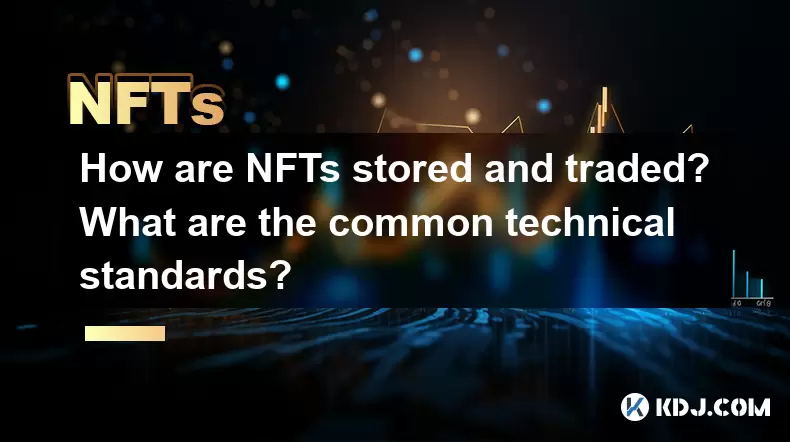
How are NFTs stored and traded? What are the common technical standards?
Jun 20,2025 at 08:49am
Understanding NFT Storage MechanismsNon-Fungible Tokens (NFTs) are digital assets that represent ownership of a unique item or piece of content, such as art, music, videos, or virtual real estate. The way NFTs are stored is crucial to their security and accessibility. Most NFTs are built on blockchain platforms like Ethereum, and the actual file—such as...
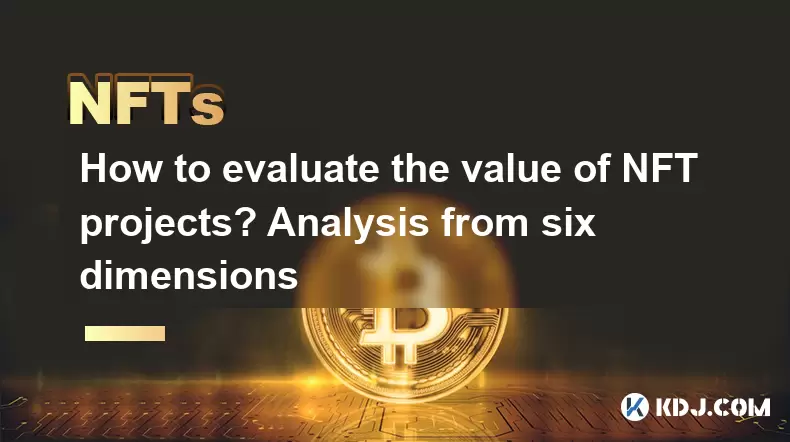
How to evaluate the value of NFT projects? Analysis from six dimensions
Jun 21,2025 at 02:28pm
1. Project Background and Team CredibilityEvaluating the value of NFT projects begins with a thorough understanding of its background and team composition. A credible project is usually backed by experienced developers, designers, and marketers who have a proven track record in blockchain or digital art industries. The presence of identifiable team memb...

What is the difference between NFT and digital collectibles? A must-read guide for beginners
Jun 19,2025 at 09:42pm
Understanding the Basics of NFTsNFTs, or Non-Fungible Tokens, are unique digital assets that represent ownership of a specific item or piece of content on the blockchain. Unlike cryptocurrencies such as Bitcoin or Ethereum, which are fungible and can be exchanged one-for-one, each NFT has distinct properties and cannot be directly replaced by another to...
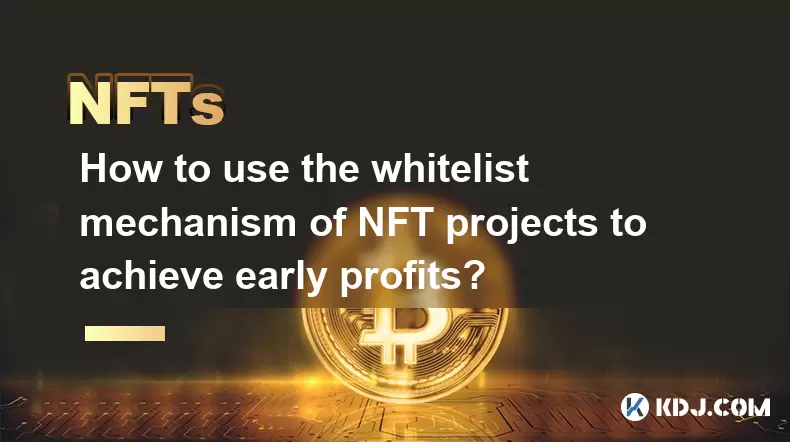
How to use the whitelist mechanism of NFT projects to achieve early profits?
Jun 21,2025 at 03:49am
Understanding the Whitelist Mechanism in NFT ProjectsThe whitelist mechanism is a popular strategy used by NFT project developers to allocate early access or exclusive minting rights to a select group of users. This system allows participants on the whitelist to mint NFTs before they are released to the general public, often at lower prices and with few...
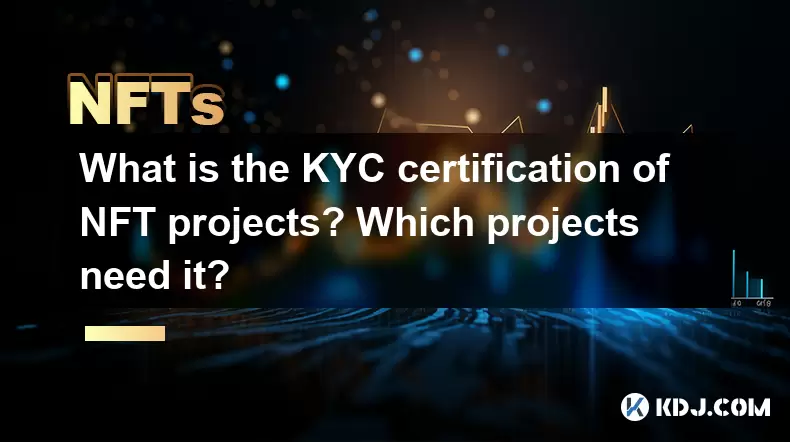
What is the KYC certification of NFT projects? Which projects need it?
Jun 21,2025 at 03:08pm
Understanding KYC Certification in the NFT SpaceKYC, or Know Your Customer, is a regulatory process used by businesses to verify the identity of their clients. In the context of NFT projects, KYC certification refers to the verification of user identities before they can participate in minting, trading, or selling NFTs on a platform. This practice is in...
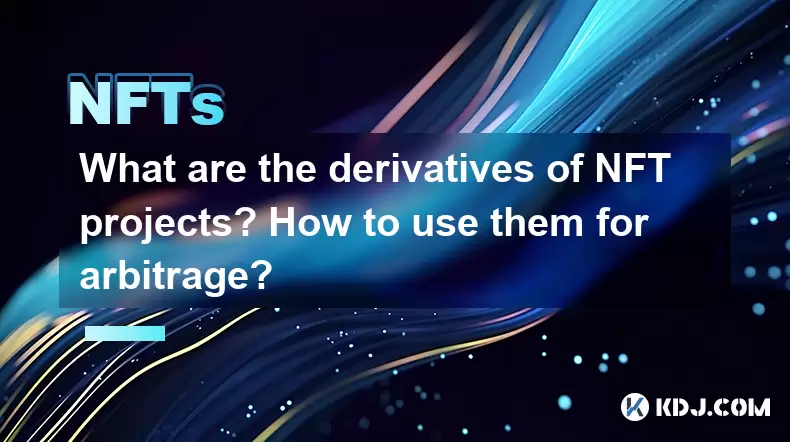
What are the derivatives of NFT projects? How to use them for arbitrage?
Jun 20,2025 at 06:14am
Understanding the Derivatives of NFT ProjectsNFTs, or non-fungible tokens, have evolved beyond simple digital collectibles. In recent years, derivatives of NFT projects have emerged as a new financial layer within the blockchain ecosystem. These derivatives are essentially financial instruments derived from the value and performance of underlying NFT as...

How are NFTs stored and traded? What are the common technical standards?
Jun 20,2025 at 08:49am
Understanding NFT Storage MechanismsNon-Fungible Tokens (NFTs) are digital assets that represent ownership of a unique item or piece of content, such as art, music, videos, or virtual real estate. The way NFTs are stored is crucial to their security and accessibility. Most NFTs are built on blockchain platforms like Ethereum, and the actual file—such as...

How to evaluate the value of NFT projects? Analysis from six dimensions
Jun 21,2025 at 02:28pm
1. Project Background and Team CredibilityEvaluating the value of NFT projects begins with a thorough understanding of its background and team composition. A credible project is usually backed by experienced developers, designers, and marketers who have a proven track record in blockchain or digital art industries. The presence of identifiable team memb...

What is the difference between NFT and digital collectibles? A must-read guide for beginners
Jun 19,2025 at 09:42pm
Understanding the Basics of NFTsNFTs, or Non-Fungible Tokens, are unique digital assets that represent ownership of a specific item or piece of content on the blockchain. Unlike cryptocurrencies such as Bitcoin or Ethereum, which are fungible and can be exchanged one-for-one, each NFT has distinct properties and cannot be directly replaced by another to...

How to use the whitelist mechanism of NFT projects to achieve early profits?
Jun 21,2025 at 03:49am
Understanding the Whitelist Mechanism in NFT ProjectsThe whitelist mechanism is a popular strategy used by NFT project developers to allocate early access or exclusive minting rights to a select group of users. This system allows participants on the whitelist to mint NFTs before they are released to the general public, often at lower prices and with few...

What is the KYC certification of NFT projects? Which projects need it?
Jun 21,2025 at 03:08pm
Understanding KYC Certification in the NFT SpaceKYC, or Know Your Customer, is a regulatory process used by businesses to verify the identity of their clients. In the context of NFT projects, KYC certification refers to the verification of user identities before they can participate in minting, trading, or selling NFTs on a platform. This practice is in...

What are the derivatives of NFT projects? How to use them for arbitrage?
Jun 20,2025 at 06:14am
Understanding the Derivatives of NFT ProjectsNFTs, or non-fungible tokens, have evolved beyond simple digital collectibles. In recent years, derivatives of NFT projects have emerged as a new financial layer within the blockchain ecosystem. These derivatives are essentially financial instruments derived from the value and performance of underlying NFT as...
See all articles























































































